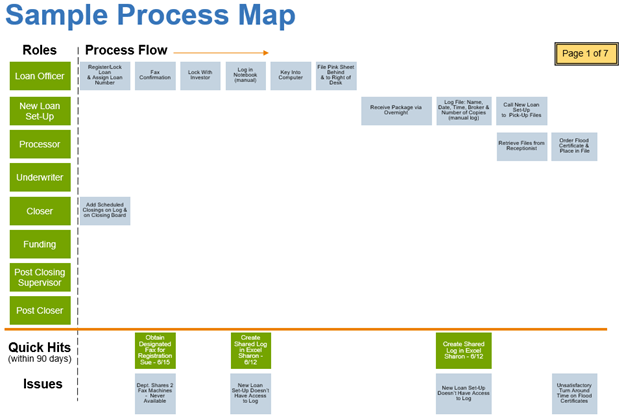This blog post comes from Ben DiMeo, Enact’s Senior Sales Consultant. He spends his time helping customers solve business problems by maximizing efficiencies, improving quality, and enhancing the customer experience. Originally published on October 20, 2022.
Given the current state of the mortgage industry, many lenders are taking extra time to look inward and improve their loan origination processes. With low housing inventory, high interest rates, and general affordability issues, it’s imperative that teams maximize efficiencies, reduce defects, improve quality, and enhance the customer experience. These pillars to the origination process require a disciplined strategy to achieve success.
Because of your commitment to diligence and excellence, sustainably executing on this goal relies on specific tools and techniques to help you identify issues and create opportunities in the path towards process optimization. That’s why having a strategy in place to help with process analysis and improvement is key– in our blog, we break down certain tools and tips to help you in this endeavor. And remember, gaining insight from your existing staff, processes, and task-based responsibilities can be a rewarding exercise to help uncover existing areas of opportunity.
Process Analysis Overview
Because the mortgage industry is ever-changing and evolving with its people, products, models, strategies, and technology, it’s critical to conduct an in-depth review of your origination process every 24-36 months. This might feel like a complicated task as there are typically three versions of your process at any given time.
- the pre-scripted, documented version which represents the company’s policy and procedures;
- the “as is” version which represents what is “actually” happening on a day-to-day basis to get the job done;
- and the future gold standard which represents how you would like the process to be one day.
The visual diagram below does a great job of illustrating how this dynamic can look and feel from moment-to-moment, month-to-month, and year-to-year:

As you can see, often what is “actually” happening on a daily basis is far more complicated than your intended procedures and much less efficient than you would ultimately like. So how do we begin to address this problem and make headway towards improving the situation?
Process Mapping
Process mapping is a tool that facilitates and captures the identification of specific problem areas and defects to fix problems and target improvement actions for any given process. It also allows you to document process “Best Practices” and “Quick Hits” with a visual, diagnostic representation of what is occurring. This tool enables all included roles to “see” the entire process from beginning to end, allowing team members to identify and understand how each function within the process impacts its entire performance.
Give it a try yourself following the instructions below.

Completed Illustration Example:

After completing the process mapping exercise, you’ll want to go through an analysis phase. In this phase, you’ll begin assessing all the activity and actions in association with the teams and individuals responsible for completing the tasks.
Specific areas to focus on may include:
- Re-works -anytime the same or similar process is repeated by one or more roles such as reviewing information in the loan file, re-issuing a document, re-requesting items, etc.
- Hand-offs -the amount of time lost during the hand-off
- Touch points - points of contact with customer or role within the process
- High-cost or high-time consumption tasks
- Bottlenecks -areas where process tasks stop or slow (delays)
- Quality -areas where errors originate or are discovered
- Value vs. Non-value added - task assessment for value as viewed by customer or business
- Best Practice - a preferred method and performance level
To summarize the analysis a bit, the items listed above are concentrated around 3 specific variables that translate into your overall process effectiveness:
- File Quality – impacts timing, consistency, production, cost, accountability
- Process Efficiency – incorporates speed, cycle times, productivity, pipeline management, key process measurements and controls
- Customer Experience – expectations, communication, touchpoints, consistency, lasting impressions
Once you’ve spent time mapping and analyzing your processes, you’ll be in a great position to start making recommendations and suitable changes to positively impact your workflows. It’ll be easier to see and understand where defects show up in the process and how to quickly problem solve to eliminate them. These basic tools will help you improve all areas of your loan origination process – total production, overall cycle time, and pipeline management, all while providing a better customer experience for your borrowers.
Other Ways We at Enact Can Help
Going the extra mile for our lender partners is not only something we are proud of, but it’s also in our DNA! We provide a wealth of resources to help via our training courses and consulting offerings. If you want to learn more about specific topics or need extra insight, you can always contact your Enact Sales Rep for more information. They’ll be happy to meet your business needs and point you in the right direction.
Never miss a post by subscribing to the Enact MI Blog! We’ll send you our most up-to-date topics right into your inbox.









